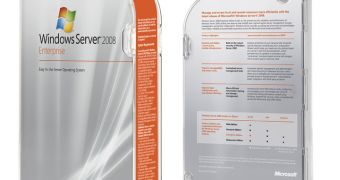As you undoubtedly know by now, Windows Server 2008, formerly codenamed Longhorn is the first Microsoft server operating system to deliver native support for PHP hosting out of the box. Why is this a big deal? Well, web developers, and especially PHP developers already have the answer to this question, but I will still indulge myself, for the rest of the readers. It all comes down to LAMP vs. WISP. Bear with me, I will explain in second, and I promise to make the best of it. Both acronyms refer to infrastructures made up of an operating system, a web server and a database management system.
Right, that's just three out of four. And in this sense, the P stands for the PHP scripting language. Essentially, LAMP is Linux, Apache, MySQL and PHP, while WISP is Windows, IIS, SQL and PHP. Now with Windows Server 2003, IIS has already been gaining consistent ground on Apache, according to data made available by Netcraft.
"Apache loses 2.8% share [in October 2007], partly through the strong growth at the major blogging systems, and partly due to 2.5 million domains on Apache expiring at trouble-free.net. Apache has around a 10% market share advantage over IIS now, which is the smallest gap between the two since IIS was launched in 1996. On the active sites measure which excludes templated sites, Apache gains 1 million sites this month, though this is eclipsed by growth of nearer 3 million for Microsoft-IIS," Netcraft revealed.
But with Windows Server 2008 being the first Microsoft server operating system natively supporting PHP hosting, the ascendant trajectory of IIS adoption is bound to accentuate in the detriment of Apache. With Windows Server 2008, the Redmond company is delivering Internet Information Services 7.0 (IIS7), with the promise of more than just a simple web server. "For the first time, Microsoft is providing full support for technology, which enables reliable and scalable PHP hosting on production Windows Server 2003 Web servers. Windows Server 2008 with IIS7 delivers FastCGI with a Go-Live license, making it the first Windows operating system to natively support PHP hosting", Microsoft explained at the TechEd IT Forum 2007.
For IIS6.0 and IIS5.1, the company made available for download the Go Live FastCGI Extension, which is up for grabs here. But what does all this have to do with Wordpress and IIS7? Well, everything. The video segment embedded at the bottom, featuring Ryan Dunn, via Microsoft TechNet Edge is an illustrative example of how to install and configure a Wordpress blog (Wordpress being a PHP-based blogging application) on IIS7. But at the same time, the video is valid for a much wider variety of PHP installations on IIS7.

 14 DAY TRIAL //
14 DAY TRIAL //